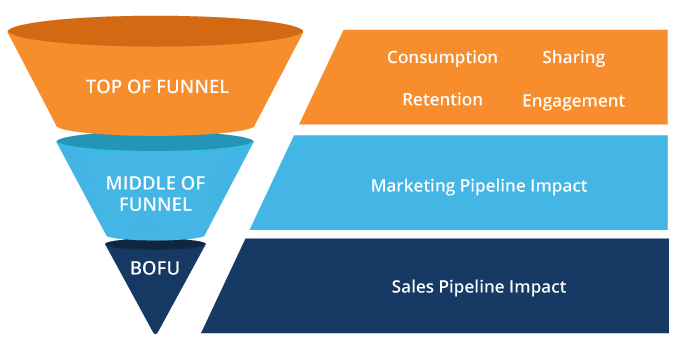Customer-Focused Blogging: How to Plan Your Content

If you’re a business owner who has a strong connection with local influencers, you know that blog posts are very powerful. It’s one of the best tools in a content marketing arsenal that can reach any kind of target market as it adapts their voice and thinking. That’s why blog reviews and features have worked for us since we started partnering with businesses in 2017.
And with that comes the frequency of your blog posts. Most B2B studies show that publishing two to four blogs a week generates a ton in terms of traffic and conversions. Think about churning out four blogs every week, each amounting to a minimum of 500 words. If you’re a writing machine, that’s a piece of cake. But if you take some time in getting your thoughts together, it could be quite the ordeal.
But that’s not the only problem here. This kind of blog frequency can also hit the very aspect of blogging where ideas thrive—quality. Writing four blogs every week is fine, but are you sure that it still has the same value and quality as before?
Businesses should never cut down on quality. People pay for quality, whether it’s tangible or not. So if you’re up to the task of generating up to 3,000 words every week without worrying about losing your writing quality, then you’d need to have a rock-solid content plan, especially if your blogs are customer-focused.

Define Your Blog’s Goals
When you set out in plotting your content plan for the rest of the year (it’s better to see things clearly early on and then add to what you’ve already planned as you move forward), you have to identify the goals that you want to achieve.
Content Marketing Institute offers business-focused metrics that can help you define what your content will have to address or supplement in 2020:
☑️ Brand awareness and recall
☑️ Audience engagement
☑️ Web traffic
☑️ Search engine visibility
☑️ Lead generation and nurturing
☑️ Customer retention
☑️ More ROI from marketing
By having these in mind, you’re setting up your blogs to focus on these things in a greater sense while doubling down on topics and themes that are directly related to your business and what you want your customers to get from you. Once you identify these goals, match them to your existing sales funnel.
Marketing Insider Group gives us three models for a sales funnel that effectively identifies a customer’s thought process before buying what you offer—awareness, consideration, and decision. This chart sums it up in detail:

The top funnel describes awareness. How do you attract your customer’s attention using your content (or in this case, the blogs you’re going to publish)? This is where you feed them bits of valuable information that answers a particular general query about a concept where your product can play a significant part. Simply put, it’s a little bit of soft-selling minus the product.
The middle funnel is where a customer considers your offer. This is the part where the customer is sold on the idea you’re selling and the content you produce to answer their questions. The transactions in this funnel are in the form of social media follows and engagement. You were convincing/legitimate enough for them to follow you online.
The bottom funnel decides whether or not the customer is up for a purchase of some sort. After following you on social, the customer is ready to receive product-specific information seeing how they already trust you as a brand. This is where the money comes in.
That’s a hell lot of information, isn’t it? True, but you’ll never get anywhere without defining these things for your content plan.

Identify Themes and a Diverse Range of Topics
Now comes the part where most people get confused in terms of content planning and writing. Let me put it this way: you’re familiar with a blog category on WordPress, right? If you are a marketing firm like us, your categories would be digital marketing, social media, web development, design, and the like. Those are your blanket themes. Topics, on the other hand, range from blog posts with titles like what I’m talking to you about right now: “Customer-Focused Blogging: How to Plan Your Content,” “Taking Advantage of Smaller Local Influencers,” all of which fall under digital marketing and social media respectively.
Having a theme for every blog post and a wide range of topics expounding on that theme would help you organize your content for the next months ahead. It also shows your customers how flexible your brand is as far as expertise is concerned.
This, then, begs the question, “how do I decide on which themes and topics to choose?” If you know your brand well, it can easily come to you, but if you want to flesh it out in detail and get raw data from your audience themselves, the next step will help you narrow it down.

Create a Customer Survey, But Make Sure It Doesn’t Come Off As Sale-sy
This step speaks for itself. We’ve all experienced being offered to fill out a survey only to answer it in a half-assed manner or respectfully turn it down if it’s by the phone. Usually, it’s all in the presentation of the survey itself. If it looks too official, you’re unlikely to get the number of respondents you need.
The best way to get a good grasp of the right themes and topics you can consider is by asking your direct audience itself. A good tool to use when designing boredom-proof surveys is Typeform and SurveyPlanet. You can easily put together a string of simple questions and post them on your website or social media.
Track Your Online Conversation
Keeping up with your social media mentions could help you get to know how your customers currently feel about your brand and respond accordingly. But sometimes, simply scouring the social media or the web doesn’t cut it. There are better ways to weed out and monitor the essential social media mentions for your brand. Some notable tools you can use are Awario, Agorapulse, Mention, Talkwalker Alerts, and Brand24.

Performing Extensive Keyword Research
Like any SEO campaign, your content should also hit all SEO metrics so you can show up in search engine results pages. Your organic ranking on Google is a good indicator of whether or not you are delivering valuable content. Keyword research can give you a detailed idea of what most searchers are looking for online. And if your business wants to penetrate the SEO sphere, it’s good to research the keywords that can help you write a topic. One awesome (and free!) tool you can use for keyword research is Answer the Public’s keyword mapper. It gives you a detailed collection of most keywords used that contain the five W’s and one H—something that’s integral to your content if you want to address questions directly aimed at your niche.
Which Content Format Is Suitable For You?
Most blogs contain a mixture of videos, images, and gifs to make your massive wall of text look more appealing and interactive. This adds flavor to what you’re publishing weekly and also gives your audience something to look forward to. But if you are hell-bent on putting out four blog posts per week, it would do you more harm than good to use the same mixture weekly. Change it up to different formats, break down one blog into bite-sized videos and sub-blogs that expand on a topic, create meaningful graphics that can add to the conversation around your first published piece.
But now comes the plotting part. Content that is published in different formats requires a set schedule that you have to follow. This now brings us to the actual “planning” part of the content planning process.

Create a Comprehensive Content Calendar, But Don’t Be Scared of Changing Things Up
Once you have all your pre-planning materials on hand, it’s time to plot things out in your content calendar. This can help you itemize things in terms of dates, type of content, the theme and topic, the number of likes and shares you want to get, and so on.
After figuring out the list of topics that you can cover, have a final set of themes for every month to keep things fresh and informative. If you stick to one theme for two to three months, your audience can get easily exhausted with the same information. The more diverse your themes are for your business, the higher the likelihood these blogs can generate interest and engagement.
After setting a monthly theme, break it down again into weeks and days so you can see which topic should fall under a specific day. But don’t forget to leave room for spur of the moment ideas that can add flair to your monthly schedule.
Recommendations




Leave A Comment